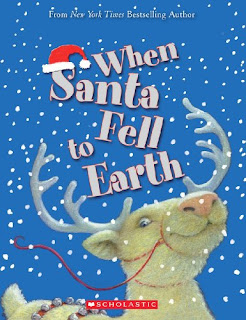The Road to Paris
Audio Book
Grimes, Nikki. The Road to Paris. New York: Recorded Books, LLC, 2007. Read by Myra Lucretia Taylor.
This picture was obtained from: http://waw.emporia.edu/curriculumguides/theroadtoparis.html
A Little about the Book:
Paris does not have a place she would consider home, except the city itself. Home was Malcolm, Paris’s brother, for Paris. However, Paris and Malcolm were separated when Paris went to her foster family’s house, the Lincoln’s, to live. Paris enjoys life at the Lincolns’, but she never seems to fit in since the town consists of white citizens and Paris is half coloured. She gets her own room, and celebrates holidays. Life without her brother is hard for Paris though, especially around Christmas time. For Paris the best part of Christmas was her brother, the only part she did not have with her. David, a boy at the Lincoln house, treats Paris like a little sister. Paris is reminded of her brother when David creates a Valentine for Paris and puts it in her dresser.
When Paris goes to visit her mother, she is saddened to see her brother was not there. While visiting her mother Paris tries hard not to love her mother but realizes she loves her because she is her mother, but does not want to love her because she is scared of getting hurt. When Paris finally gets to see Malcolm with her mother, Viola, Paris notices hardness in her brother’s face. Paris realizes her life is better off than Malcolm’s life. When Paris tells Malcolm about her life, Malcolm is happy God listened to him and provided a good home for Paris. Paris than tells Malcolm to keep God in his pocket, a saying David had told Paris. When Paris returns to the Lincoln family, she feels like a part of the family, until she looks through a photo album and realizes she is not part of the family. She did not look like anyone.
Paris starts to experience racism against her. Her best friends’ dad makes racist remarks about her. To overcome the racism Paris sings. The Lincoln’s make Paris feel like one of their own children. Paris’s life is going great until one day her real mom Viola phones her and asks her to come live with her and her new husband. Paris is faced with a hard decision she must make. A decision, which may change everything.
The Narrator:
Myra Lucretia Taylor has a very soothing voice. Taylor was easy to listen to and did an amazing job at creating emotions through her voice tone. Every word was clear, and appropriate pauses were used.
Themes:
- Belonging
- Racism
- Family Love
Age Level:
The Road to Paris is appropriate for children who are 9 years old. The audio book is easy to follow, but it is long so younger children may lose interest in the story. The story is about a subject, which younger children may not fully understand. A child needs to understand children get taken away from their family to provide them with a better life. However, sometimes children can be returned to their biological family also.
Personal Response:
I was not a fan of The Road to Paris, but I believe it was partially because it was the audio book version I listened to. I found the audio book to be long. I would have rather have read the book.
The story itself was decent. I was very indifferent about my feelings about it. I did enjoy how racism was part of the story but not the complete focus. I enjoyed how Paris talked about her feelings towards her mother, and her ability to love her mother and forgive her after everything. Personally, I found The Road to Paris to be an amazing book to give hope to children whose parents are struggling with addiction. With all of the books available, which portray foster children in a negative light, it was great to find a book with a happy ending.
Teacher Ideas:
http://www.nikkigrimes.com/teacher/roadtg.html
This website includes a synopsis of the book, and a list of literacy activities. There is also a list of questions to ask the students before and after reading the book, and tips for reading the book.
A Great Video for Teachers about using The Road To Paris:



